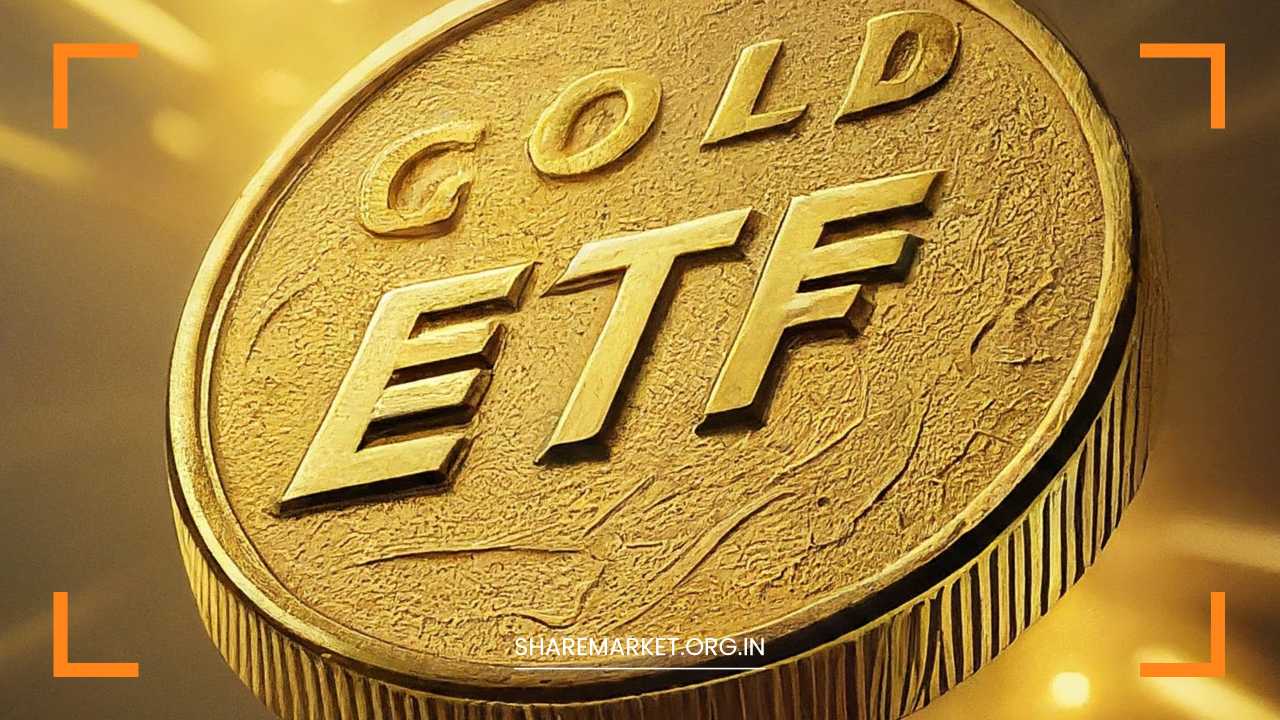How to Invest in Gold ETF

Invest in Gold ETF
How to Invest in Gold ETFs: A Comprehensive Guide for Investors
Gold has historically been a symbol of wealth and security. For centuries, it has served not only as a currency but also as a store of value that withstands the test of time.
In India, gold holds a revered position, transcending beyond its financial value to embody cultural, religious, and social significance.
Amidst the turbulence of financial markets and the looming specter of inflation, many investors are increasingly turning to gold as a reliable hedge against economic instability.
Gold ETFs (Exchange-Traded Funds) offer a modern, efficient way to invest in gold without the complications associated with physical gold. Unlike traditional gold investments, which involve issues related to storage, purity, and security, gold ETFs provide a paper-based investment that mirrors the price of gold.
This comprehensive guide will walk you through the ins and outs of investing in gold ETFs in India, from understanding their structure to choosing the right one and managing your investment.
Understanding Gold ETFs
Gold ETFs are investment funds that exclusively invest in physical gold. Managed by professional fund managers, these ETFs buy and hold gold bars in secure vaults.
Investors can then buy shares of these funds on a stock exchange, much like they would buy shares of a company. The price of the ETF shares correlates directly with the price of gold.
Key Benefits of Gold ETFs
Diversification: Including gold in your investment portfolio can offer diversification benefits. Gold often behaves differently compared to other asset classes, such as equities and bonds, and can act as a buffer against market volatility and inflation. Diversification is crucial in managing risk and enhancing the stability of your overall investment strategy.
Liquidity: Gold ETFs provide high liquidity because they are traded on major stock exchanges. This means you can quickly buy or sell your ETF shares without significant price impact, unlike physical gold which might require time and effort to sell.
Affordability: Investing in gold ETFs allows you to gain exposure to gold with relatively small amounts of money. This affordability makes it easier for a broader range of investors to participate in gold investments without needing to purchase large quantities of physical gold.
Transparency: Gold ETFs are subject to stringent regulatory requirements, ensuring transparency. The gold holdings of the ETF are audited regularly, and the details of the holdings are disclosed to investors. This transparency helps build trust and ensures you know exactly what you are investing in.
Convenience: One of the significant advantages of gold ETFs is the convenience they offer. Unlike physical gold, which requires secure storage and verification of purity, gold ETFs eliminate these concerns. The gold is securely stored by the fund, and you don’t need to worry about handling or safeguarding it.
How Gold ETFs Work
To understand how to invest in gold ETFs, it’s essential to grasp how they operate:
Gold Purchase: The first step involves the fund manager purchasing physical gold. This gold is held in a secure vault, ensuring its safety and integrity. The fund is responsible for the custody of the gold and its associated costs.
Units Creation: The ETF creates units that represent a fraction of the gold held by the fund. Each unit corresponds to a specific amount of gold, typically measured in grams or ounces.
Listing: The ETF units are then listed on a stock exchange. This listing makes the units available for trading by individual investors and institutional buyers.
Trading: Investors can buy and sell ETF units on the stock exchange, just like they would with stocks or other securities. The trading of ETF units provides liquidity and flexibility for investors.
Price Tracking: The price of ETF units fluctuates in line with the price of gold. As the price of gold rises or falls, the value of the ETF units adjusts accordingly. This tracking ensures that the ETF accurately reflects the performance of gold.
Factors to Consider Before Investing in Gold ETFs
Investing in gold ETFs requires careful consideration of several factors to ensure they align with your financial goals and risk tolerance:
Investment Horizon: Gold is typically considered a long-term investment. If you’re looking for quick profits, gold may not be the best choice. It is important to have a long-term perspective as gold can be volatile in the short term, and its benefits often accrue over a more extended period.
Risk Tolerance: Understanding your risk tolerance is crucial when investing in gold ETFs. Gold prices can be influenced by various factors including economic conditions, geopolitical events, and currency fluctuations. These factors can lead to price volatility, which may not be suitable for all investors.
Asset Allocation: Gold should be part of a diversified portfolio. It is not advisable to invest all your money in gold ETFs or any single asset class. A well-balanced portfolio includes a mix of assets to spread risk and enhance potential returns.
Cost: Evaluate the expense ratio of the gold ETF you are considering. The expense ratio includes management fees and other costs associated with the fund. Lower expense ratios are preferable as they reduce the impact on your overall returns.
Gold Purity: Ensure that the ETF invests in gold of high purity. The standard for gold ETFs is typically gold with a purity of 99.5% or higher. Investing in pure gold helps maintain the quality and reliability of your investment.
Choosing the Right Gold ETF
India offers a variety of gold ETFs, each with different characteristics. To select the right ETF, consider the following factors:
Tracking Error: The tracking error measures how closely the ETF’s performance mirrors the price of gold. A lower tracking error indicates that the ETF is closely tracking the gold price, which is preferable for accurate investment exposure.
Expense Ratio: The expense ratio reflects the costs associated with managing the ETF. Lower expense ratios are generally more favorable as they leave more of your returns intact. Compare expense ratios across different gold ETFs to find one that offers good value.
Gold Holding: Verify that the ETF holds physical gold rather than gold derivatives, futures, or other financial instruments. Physical gold holdings provide more reliable exposure to gold prices and reduce counterparty risk.
Liquidity: Choose an ETF with high trading volumes and liquidity. A liquid ETF is easier to buy and sell without significant price fluctuations. High liquidity also ensures better pricing and lower bid-ask spreads.
Steps to Invest in Gold ETFs
Investing in gold ETFs involves several steps, from setting up accounts to executing trades:
1. Open a Demat and Trading Account: To invest in gold ETFs, you need both a Demat account and a trading account. The Demat account holds your ETF units electronically, while the trading account allows you to execute buy and sell orders. You can open these accounts through a brokerage firm or financial institution.
2. Research Gold ETFs: Before investing, research various gold ETFs to compare their features, performance, and costs. Look at factors such as expense ratios, tracking errors, and liquidity. Reading fund fact sheets and performance reports can help you make an informed decision.
3. Place an Order: Once you have selected the ETF you wish to invest in, use your trading platform to place an order. Specify the number of ETF units you want to buy and execute the trade. The transaction will be processed at the prevailing market price.
4. Monitor Your Investment: Regularly review the performance of your gold ETF and stay updated on gold market trends. Monitoring your investment helps you stay informed about changes in gold prices and the ETF’s performance. Make adjustments to your investment strategy if necessary based on market conditions and your financial goals.
Tax Implications on Gold ETFs
Understanding the tax implications of gold ETFs is crucial for effective financial planning. Here’s an overview of the taxes associated with gold ETF investments:
Long-Term Capital Gains Tax: If you hold the gold ETF for more than one year, any gains from the sale are subject to long-term capital gains tax. In India, this tax is levied at 20% with indexation benefits. Indexation allows you to adjust the purchase price for inflation, reducing the taxable gain and potentially lowering your tax liability.
Short-Term Capital Gains Tax: If you sell the gold ETF within one year of purchase, any gains are considered short-term capital gains. These gains are taxed according to your income tax slab rate, which could be higher than the long-term capital gains tax rate.
Dividend Distribution Tax: If the gold ETF distributes dividends, these dividends are subject to a dividend distribution tax. This tax is applied to the fund before dividends are paid out to investors, and the amount received by investors will be net of this tax.
Gold ETFs vs. Physical Gold
Comparing gold ETFs with physical gold helps you understand the relative advantages and disadvantages of each investment type:
| Feature | Gold ETFs | Physical Gold |
|---|---|---|
| Liquidity | High: Easily traded on exchanges | Low: May require finding a buyer |
| Cost | Lower (excluding brokerage fees) | Higher (purchase, storage, insurance) |
| Purity | Guaranteed | Potential purity issues |
| Security | Securely held by the fund | Security concerns with storage |
Gold ETFs offer several advantages over physical gold. They provide higher liquidity, lower costs, and guaranteed purity, with the security managed by the fund. In contrast, physical gold involves higher costs related to purchase, storage, and insurance, and may pose security risks associated with physical handling and storage.
Conclusion
Gold ETFs present a modern, efficient way to invest in gold, offering benefits such as liquidity, convenience, and diversification. By understanding the structure and advantages of gold ETFs and carefully selecting the right ETF based on your investment goals and risk tolerance, you can effectively incorporate gold into your investment portfolio.
Gold should be considered as part of a broader, diversified investment strategy rather than a stand-alone solution. It is essential to approach gold ETFs with a long-term perspective and be prepared for potential volatility in the short term. Consulting with a financial advisor can help tailor your investment strategy to your personal financial situation and objectives, ensuring that gold ETFs align with your overall investment goals.
Disclaimer
This article is intended for informational purposes only and should not be considered as financial advice. Always consult with a certified financial advisor before making any investment decisions. Personalized advice from a professional can help ensure that your investments align with your financial goals and risk tolerance.

















